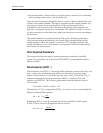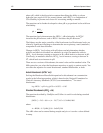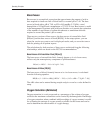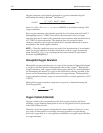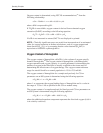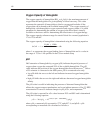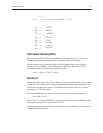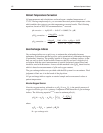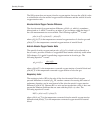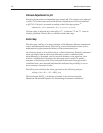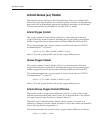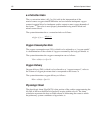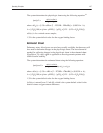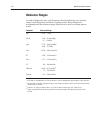
Operating Principles IĆ33
The 800 system does not report alveolar oxygen tension, but uses the pO
2
(A) value
to calculate the alveolar-arterial oxygen tension difference and the arterial-alveolar
oxygen tension ratio.
AlveolarĆArterial Oxygen Tension Difference
The alveolar-arterial oxygen tension difference, pO
2
(A–a), which is sometimes
abbreviated as A–aDO
2
, is useful as an index of gas exchange within the lungs if
the ctO
2
measurements are not available. The following equation
16,28
is used:
pO
2
(A–a)(T) = pO
2
(A)(T) – pO
2
(a)(T)
where pO
2
(A)(T) is the temperature corrected oxygen tension of alveolar gas and
pO
2
(a)(T) is the temperature corrected oxygen tension of arterial blood.
Ar terialĆAlveolar Oxygen Tension Ratio
The arterial-alveolar oxygen tension ratio, pO
2
(a/A), which is also referred to as
the a/A ratio, provides an index of oxygenation that remains relatively stable when
F
I
O
2
changes. It is useful in predicting oxygen tension in alveolar gas. The
following equation
29
is used:
pO
2
(a/A)(T) =
pO
2
(a)(T)
pO
2
(A)(T)
where pO
2
(a)(T) is the temperature corrected oxygen tension of arterial blood and
pO
2
(A)(T) is the temperature corrected oxygen tension of alveolar gas.
Respirator y Index
The respiratory index (RI) is the ratio of the alveolar-arterial blood oxygen
pressure difference to arterial pO
2
. RI, another a means of assessing the extent of
pulmonary shunting, can be used instead of the alveolar-arterial oxygen tension
difference [pO
2
(A–a)]. Because RI is a ratio and not an absolute value, it does not
present the inherent problems that are seen with the pO
2
(A–a) value. The
following equation
16
is used:
RI(T) = pO
2
(A–a)(T) / pO
2
(a)(T)
where pO
2
(A–a)(T) is the temperature corrected alveolar-arterial oxygen tension
difference and pO
2
(a)(T) is the temperature corrected oxygen tension of arterial
blood.



